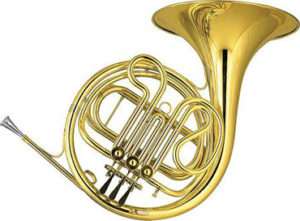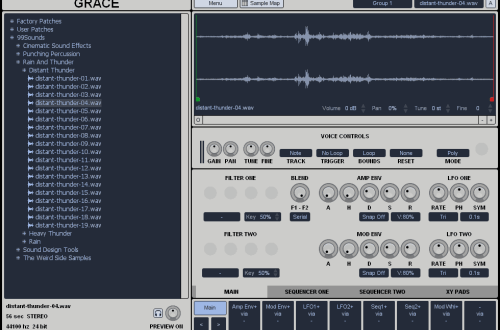
Horn story
Translated from German, Waldhorn means forest horn. The horn is a wind  musical instrument, which is usually made of copper. It looks like a long metal tube with a mouthpiece, ending in a wide bell. This musical instrument has a very charming sound. The history of the horn has its roots deep in antiquity, numbering several millennia.
musical instrument, which is usually made of copper. It looks like a long metal tube with a mouthpiece, ending in a wide bell. This musical instrument has a very charming sound. The history of the horn has its roots deep in antiquity, numbering several millennia.
The horn, which was made of bronze and used as a signal instrument by the warriors of Ancient Rome, can be considered the predecessor of the French horn. For example, the famous Roman commander Alexander the Great used a similar horn to give signals, but they didn’t think about any game on it in those days.
In the Middle Ages, the horn was widespread in the military and court spheres. Signal horns are widely used in various tournaments, hunts, and of course, numerous battles. Any warrior who participated in a military conflict had his own horn.
Signal horns were made from natural materials, so they were not very durable. They were not suitable for everyday use. Over time, craftsmen who make horns came to the conclusion that it is best to make them from metal, giving them the natural shape of animal horns without much curvature.  The sound of such horns spread far around the area, which helped to use them when hunting large horned animals. They were most widespread in France in the 60s of the 17th century. After a couple of decades, the evolution of the horn continued in Bohemia. In those days, trumpeters played horns, but in Bohemia a special school appeared, whose graduates became horn players. It was not until the early 18th century that signal horns began to be called “natural horn” or “plain horn”. Natural horns were metal tubes, the diameter of which at the base was about 0,9 centimeters, and at the bell more than 30 centimeters. The length of such tubes in a straightened form could be from 3,5 to 5 meters.
The sound of such horns spread far around the area, which helped to use them when hunting large horned animals. They were most widespread in France in the 60s of the 17th century. After a couple of decades, the evolution of the horn continued in Bohemia. In those days, trumpeters played horns, but in Bohemia a special school appeared, whose graduates became horn players. It was not until the early 18th century that signal horns began to be called “natural horn” or “plain horn”. Natural horns were metal tubes, the diameter of which at the base was about 0,9 centimeters, and at the bell more than 30 centimeters. The length of such tubes in a straightened form could be from 3,5 to 5 meters.
Horn player from Bohemia A.I. Hampl, who served at the royal court in Dresden, in order to change the sound of the instrument by making it higher, began to insert a soft tampon into the bell of the horn. After some time, Humple came to the conclusion that the function of a tampon can be fully performed by the musician’s hand. After some time, all horn players began to use this way of playing.
Around the beginning of the 18th century, horns began to be used in opera, symphony and brass bands. The debut took place in the opera Princess of Elis by composer J.B. Lully.  Soon, the horn had additional pipes that were inserted between the mouthpiece and the main pipe. They lowered the sound of the musical instrument.
Soon, the horn had additional pipes that were inserted between the mouthpiece and the main pipe. They lowered the sound of the musical instrument.
At the beginning of the 19th century, the valve was invented, which was the last major change in the instrument. The most promising design was a three-valve mechanism. One of the first composers to use such a horn was Wagner. Already by the 70s of the 19th century, a similar horn, called chromatic, completely replaced the natural one from orchestras.
In the 20th century, horns with an additional valve began to be actively used, which expanded the possibilities of playing in a high register. In 1971, the international horn community decided to call the horn “horn”.
In 2007, the gabae and horn became Guinness World Record holders as the most complex musical instruments for performers.





